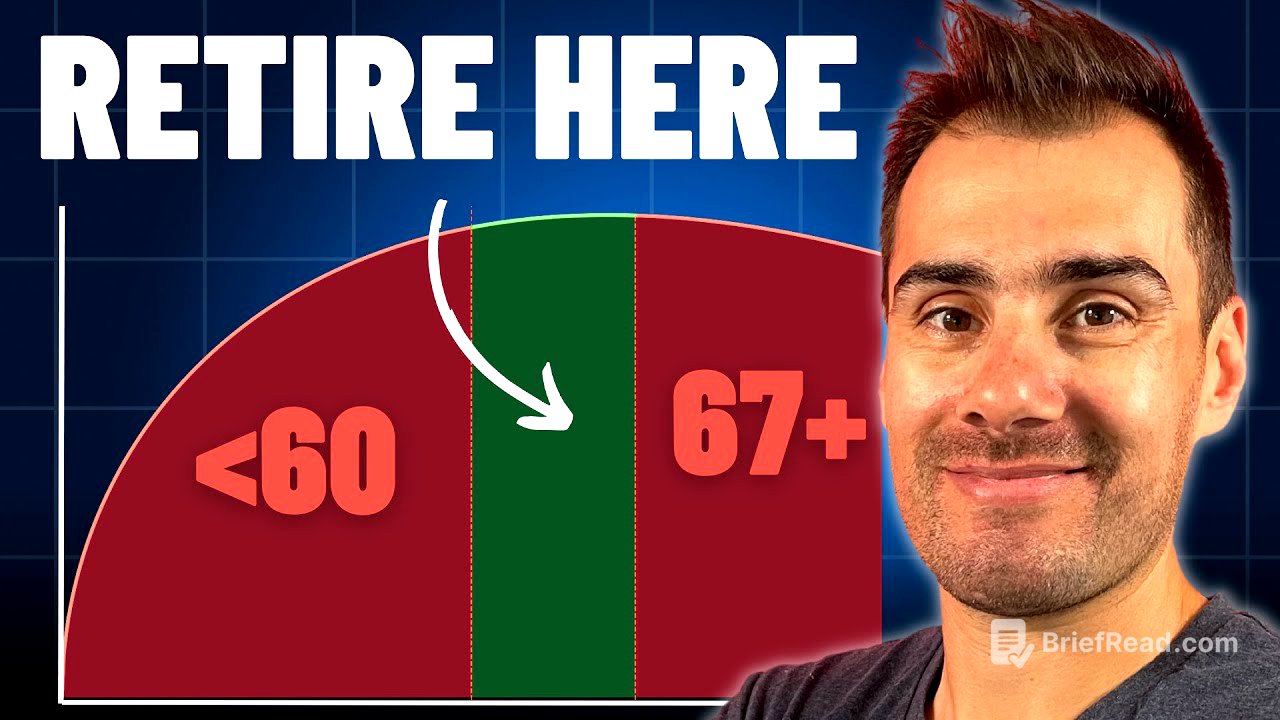TLDR;
This video outlines seven key considerations for Australians planning to retire between the ages of 60 and 67. It covers superannuation access, withdrawal options and their tax implications, transition-to-retirement pensions, age pension eligibility, estimating required superannuation, the importance of financial modeling, and continued contributions to super after retirement. Additional considerations include investment strategy, debt management, estate planning, healthcare, gifting, and emotional preparation.
- Accessing superannuation from age 60 involves meeting specific conditions of release, such as ceasing employment or declaring permanent retirement.
- Withdrawing superannuation can be done through income streams (account-based pensions) or lump sums, each with different tax implications.
- Transition to Retirement (TTR) pensions allow access to a portion of super while still working, but investment earnings are taxed until full retirement or age 65.
- Age pension eligibility starts at 67, and decisions made between 60 and 67 can affect entitlements.
- Estimating how much superannuation is needed involves considering individual circumstances and using industry benchmarks as a starting point.
- Financial modeling provides a clearer picture of retirement finances by forecasting long-term outcomes based on various factors.
- Contributing to superannuation can continue after retirement, offering tax benefits and the potential for downsizer contributions from the sale of a home.
Planning To Retire at 60–67? 7 Key Considerations [0:00]
The video introduces seven key considerations for those planning to retire between 60 and 67, emphasizing the importance of strategic planning to maximize retirement benefits and avoid financial pitfalls. It contrasts strategic retirement planning with the risks of retiring without a plan, such as running out of money or paying too much in taxes. The video aims to provide viewers with the knowledge to retire confidently.
#1 Superannuation Access From Age 60 [0:40]
Turning 60 is a significant milestone as it marks the first time most Australians can access their superannuation. To fully access super, one must meet a condition of release, such as ceasing an employment arrangement after turning 60, which allows access to the super built up to that point, even if another job is started immediately. Another option is declaring permanent retirement, meaning not planning to work more than 10 hours a week, which allows full access to super and future contributions. Full access to superannuation is granted at age 65, regardless of employment status. Accessing super doesn't preclude returning to the workforce later.
#2 Withdrawing Your Super & Tax [2:05]
Once eligible to access superannuation, the next decision involves how to withdraw it, with each option having different rules, benefits, and tax outcomes. The first option is an income stream, typically through an account-based pension, providing regular income while the balance remains invested. A significant advantage is that income drawn after age 60 is tax-free, and investment earnings within the pension are also tax-free if a full condition of release has been met, except in the case of a transition to retirement pension where earnings are taxed at up to 15% until full retirement or age 65. Minimum annual drawdowns are required. The second option is lump sum withdrawals, which are generally tax-free after age 60, with the exception of any untaxed component within the super balance. Many people use a combination of both income streams and lump sum withdrawals. An alternative is to keep the super in an accumulation account, which may be chosen for strategic reasons such as planning to return to work or maximizing Centrelink payments, but investment earnings are taxed at up to 15%.
#3 Transition-to-Retirement Pension [4:17]
A transition to retirement (TTR) pension allows individuals between 60 and 65 to access part of their super while still working. It's often used to supplement income if work hours are reduced, allowing individuals to maintain their lifestyle. A TTR pension allows withdrawals between 4% and 10% of the balance each year. Combining a TTR with salary sacrifice can reduce tax and grow super, known as a TTR strategy. Investment earnings in a TTR are taxed at 15%, the same as an accumulation account, until full retirement or age 65, at which point the balance becomes tax-free.
#4 Age Pension Considerations [5:10]
The age pension starts at 67, with applications accepted up to 13 weeks prior. Centrelink assesses both income and assets, including wages, investments, car, and super balance, to determine eligibility for a full or part pension. Retiring between 60 and 67 requires planning to bridge the gap before age 67 using super or other savings, and decisions made during this period can affect age pension entitlements later. Super in an accumulation account is exempt from Centrelink's income and assets test until age 67, but starting a super income stream before 67 means the balance is counted. Strategies like moving super from the older to the younger spouse can reduce accessible assets, but professional advice is recommended due to potential risks and tax implications.
#5 How Much Super You Need To Retire Between 60 and 67 [6:47]
Retiring in your early 60s means your super may need to last around 30 years or longer. There's no single answer to how much super is enough, as it depends on factors like age pension eligibility, retirement age, and desired lifestyle. Industry benchmarks from the Association of Superannuation Funds of Australia (ASFA) suggest that at age 67, you'll need about $595,000 if you're single or $690,000 if you're a couple. Retiring earlier, say at 60, requires a larger super balance, roughly $890,000 for a single person and $1.1 million for a couple. These figures assume the retiree(s) are homeowners, have drawn down all their capital, and receive a part age pension.
#6 Consider Modelling Your Own Situation [7:56]
To get a clearer picture of what retirement could look like, it's important to model your own situation with retirement projections. Retirement projections are long-term forecasts that show how your finances could play out over time based on your current situation and retirement goals. They factor in your super balance, savings and investments, income sources, lifestyle expenses, one-off costs, and assumptions like expected investment returns, inflation, and life expectancy. A good starting point is free online tools like the MoneySmart retirement planner. Projections will show how much you could spend each year, how your super balance might change over time, and the age that your savings might run out.
#7 Contributing to Super After You’ve Retired [9:02]
Even after retiring, it's possible to continue contributing to superannuation until age 75, for example, if you sell assets, downsize your home, or receive an inheritance. For those aged 60 to 67, there's no work test for personal deductible contributions, allowing you to grow your super even if retired or working very little, while also enjoying tax savings. You may also qualify for a downsizer contribution, which lets you transfer up to $300,000 per person from the sale of your home into super, without it counting towards your contribution caps. To be eligible, you need to be 55 or over, have owned your home for at least 10 years, and make the contribution within 90 days of receiving the sale proceeds.
Additional Considerations [9:49]
Beyond the seven key considerations, several other factors can significantly impact retirement. These include rebalancing your investment portfolio to reduce risk while still maintaining growth, managing debts to free up cash flow, keeping death benefit nominations up to date for estate planning purposes, reviewing private healthcare cover, being cautious when gifting or transferring assets due to potential impacts on Centrelink entitlements, and preparing emotionally for the transition to retirement. Retirement should be a time of fulfillment, and it's important to think about how to maintain purpose, structure, and social connection in this new chapter.









